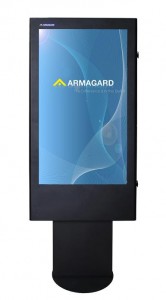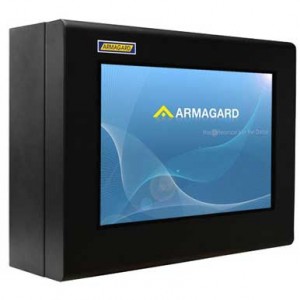When using outdoor screens for outdoor digital signage or information, once choice that requires some thought is the orientation of the screen. When using television at home to watch regular programming or DVDs, the screen is in landscape mode, with most screens implementing widescreen to provide a 16:9 aspect ratio (16 units wide, 9 high)
This works perfectly at home as a landscape screen is what all TV programs and DVD makers produce content in and has similarities (but not the same) to the aspect ratio used in film. Using a screen outside of the home, however, doesn’t necessarily mean you have to stick to landscape mode.

Portrait Mode
Many digital signage displays seen around shopping malls, retail stores and places like airports, are often positioned in portrait mode, with the screens placed vertically, often flat against a wall. This 9:16 orientation has some benefits, namely in space saving. As digital signage screens need placing on a wall at eye-level, placing them in portrait mode takes up less space than landscape mode and enables the placing of more screens on any given space.
Portrait mode is also good for providing content with long images such as people, as it enables the lengthier images to be larger than in landscape mode.
Landscape Mode
Perhaps the biggest advantage of landscape mode is that people are more used to seeing a screen in this orientation. As it is the same orientation people view televisions at home, they are more able to take in large quantities of information on a landscape screen. Most information screens at airports and train stations use landscape mode, enabling them to provide large quantities of information such as timetables and schedules.

Best for Recall
While surprisingly, very little research has ever been conducted into which is more effective for outdoor digital signage, landscape or portrait. What research there is points to landscape being the better solution for recall of an advert, and is perhaps due to people’s familiarity with landscape mode screens; however, for advertisers, portraiture seems to be the orientation of choice for indoor installations, but for outdoor digital signage, billboards in landscape mode seem to be the orientation of choice.
Comments are closed.